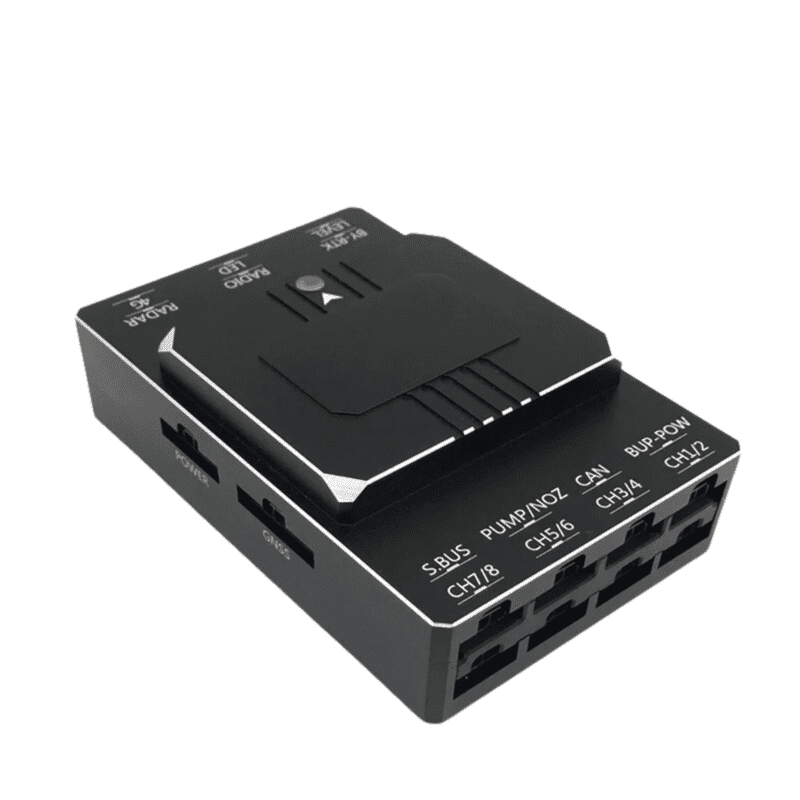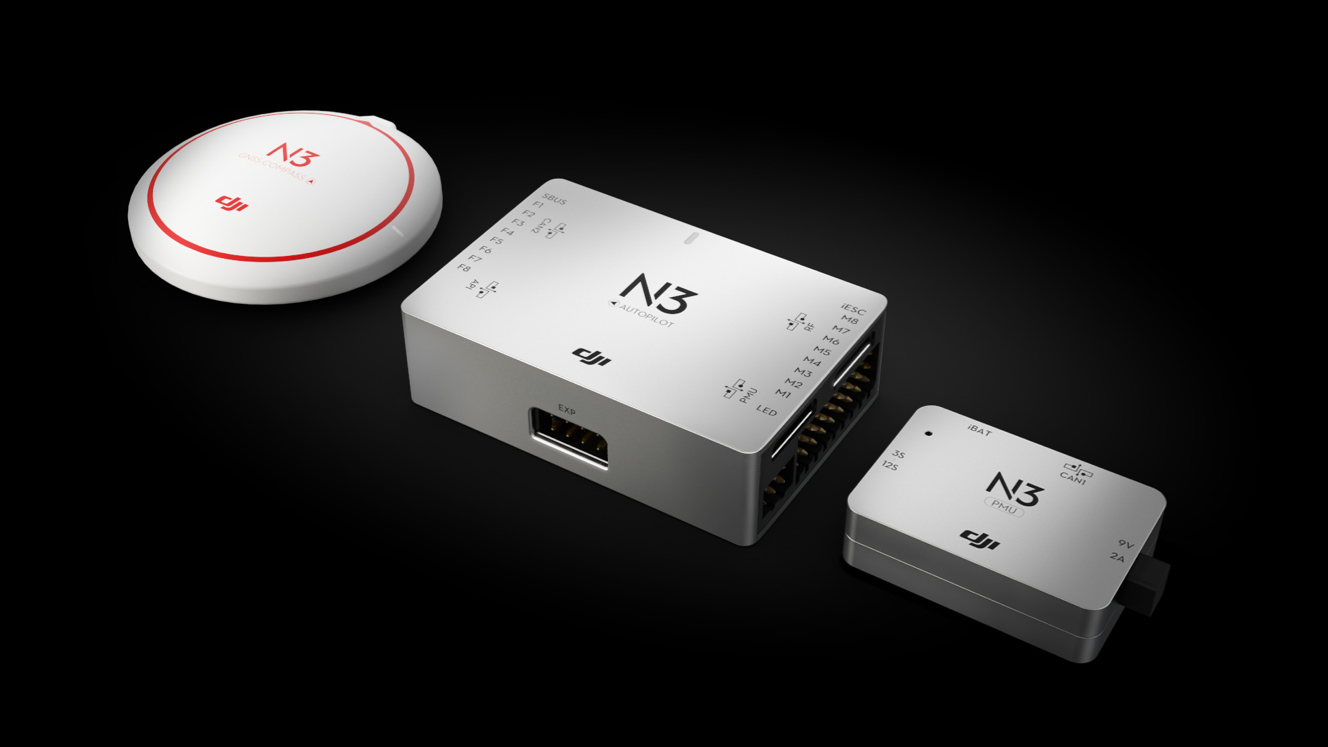Discovering the Role of Drone Flight Controllers in Enhancing Flight Stability and Navigation Efficiency
The improvement of drone technology has dramatically enhanced the value of flight controllers, which serve as the mind of these aerial cars. By integrating real-time data from a range of sensors, flight controllers enhance trip security and navigating efficiency, making certain that drones can operate smoothly even in complicated settings.

Recognizing Trip Controllers
Flight controllers are indispensable components in the performance of drones, offering as the minds that maintain and take care of trip operations. These innovative tools process data from various sensors, consisting of accelerometers, gyroscopes, and GPS, to ensure that the drone preserves its desired flight course. The flight controller interprets this information and implements commands based on pre-defined algorithms, making it possible for the drone to reply to environmental modifications, such as wind or barriers.
The main feature of a trip controller is to preserve stability throughout trip. It accomplishes this by making real-time changes to the drone's motors and control surface areas, making sure balance and control. Furthermore, modern-day flight controllers integrate innovative features such as waypoint navigating, enabling automated trip paths and boosted functional efficiency.
Comprehending the style of flight controllers is critical for both hobbyists and professionals. They typically include a microcontroller, firmware, and various user interfaces for sensor input and interaction. As modern technology advances, trip controllers have actually ended up being extra qualified and portable, integrating expert system to enhance decision-making procedures and adjust to complex trip scenarios. This evolution indicates a pivotal advancement in the drone industry, leading the way for much more sophisticated applications and much safer operations.
Trick Parts of Flight Stability
Achieving optimum flight security in drones relies upon several crucial parts that function in show to make certain regulated and smooth operations. Central to this stability is the trip controller itself, which refines information from different sensors to keep the preferred flight attitude. This includes accelerometers and gyroscopes that measure motion and positioning, permitting for real-time changes to the drone's setting.
Another critical part is the digital rate controllers (ESCs), which manage the power delivered to the motors. By finely adjusting motor speeds in reaction to trip controller commands, ESCs aid preserve equilibrium and counteract disruptions triggered by wind or unexpected activities.
Additionally, the layout of the drone's structure plays a critical duty in flight stability. A well-structured frame reduces vibrations and boosts the total aerodynamic account, adding to smoother trip attributes. The combination of sophisticated formulas within the flight controller aids in predictive changes, guaranteeing a responsive and adaptable trip experience.
Together, these parts form a natural system that boosts a drone's security, enabling specific handling and improved efficiency in numerous trip conditions.
Navigating Performance Techniques
Performance in navigating is essential for optimizing drone operations, especially in intricate settings. Efficient navigating methods enhance the ability of drones to go across tough terrains and prevent obstacles, thereby improving functional efficiency and safety.
One popular strategy is the execution of innovative GPS and inertial dimension systems (IMUs) that give precise area monitoring and orientation data. These innovations permit drones to compute optimal flight paths in real-time, thinking about various elements such as wind conditions and potential barriers.
Another technique entails making use of formulas for course planning and optimization. Formulas such as A * and Dijkstra's algorithm can be deployed to identify one of the most reliable route while minimizing energy consumption and trip time. Furthermore, integrating equipment knowing versions can allow drones to adaptively pick up from their settings, boosting navigating capabilities through experience.

Effect On Autonomous Drones
The combination of innovative navigating strategies has actually profoundly transformed the capabilities of independent drones, enabling them to run with greater autonomy and accuracy. SparkNavi drone flight controller and GNSS/INS made in taiwan. These enhancements are largely credited to innovative trip controllers that utilize real-time data processing and sensing unit combination, enabling drones to browse intricate settings flawlessly
The impact on independent drones prolongs beyond plain navigation; it includes enhanced obstacle evasion, improved stability throughout dynamic problems, and increased goal dependability. By leveraging algorithms that incorporate artificial intelligence and expert system, drones can adapt to transforming scenarios, making educated decisions that enhance their flight courses while lessening risks.
Moreover, the implementation of robust trip controllers has actually assisted in the execution of intricate jobs, such as aerial examinations, shipment solutions, and agricultural tracking, with marginal human intervention. This capacity not just enhances procedures yet also lowers click here to read human mistake, consequently enhancing overall safety and security.
As an outcome, the operational range of independent drones has actually increased dramatically, making them essential tools in numerous sectors. Their capability to execute effectively in diverse scenarios underscores the important duty that advanced trip controllers play in forming the future of unmanned airborne systems.
Future Fads in Flight Control
Regularly, developments in trip control innovation are poised to redefine the landscape of drone operations in the coming years. Arising patterns suggest a significant shift towards boosted expert system (AI) integration, allowing trip controllers to process real-time data more effectively. This evolution will help with enhanced decision-making abilities, enabling drones to adjust to dynamic environmental conditions autonomously.
In addition, the implementation of artificial intelligence algorithms is anticipated to improve anticipating maintenance, thereby reducing downtime and prolonging the lifecycle of drone components. This positive method to upkeep will certainly be essential as drone applications increase throughout different sectors, from agriculture to logistics.

.png)
Lastly, innovations this content in safe communication protocols will certainly attend to safety and regulatory concerns, making sure that drones can operate flawlessly in overloaded airspaces (SparkNavi drone flight controller and GNSS/INS made in taiwan). Jointly, these trends direct in the direction of a future where flight control systems are not only smarter and more also qualified yet effective of running securely in an increasingly incorporated airspace
Verdict
To conclude, drone flight controllers are indispensable to boosting flight security and navigation efficiency through the innovative handling of sensing unit data. By maintaining optimum trip perspectives and using sophisticated algorithms for course optimization and challenge evasion, these controllers substantially add to the freedom and operational safety and security of drones. As technology remains this link to advance, further advancements in flight control systems are anticipated, promising enhanced performance and increased capacities in the world of unmanned airborne vehicles.
By incorporating real-time data from a selection of sensors, flight controllers improve flight security and navigating efficiency, making certain that drones can run smoothly also in intricate atmospheres.Flight controllers are essential elements in the performance of drones, serving as the minds that support and manage flight procedures. Additionally, contemporary flight controllers include advanced functions such as waypoint navigating, permitting for automated trip paths and enhanced operational effectiveness.
Central to this stability is the trip controller itself, which refines data from various sensors to preserve the preferred flight attitude.In conclusion, drone trip controllers are important to enhancing trip stability and navigating effectiveness via the innovative handling of sensing unit information.